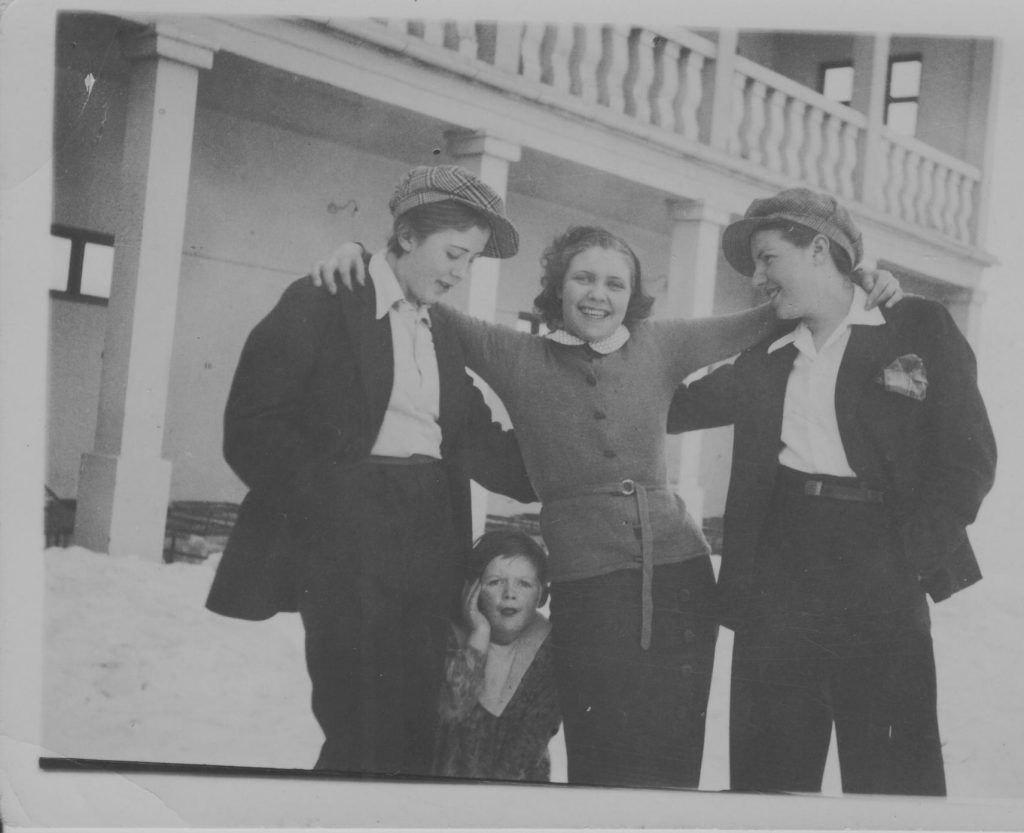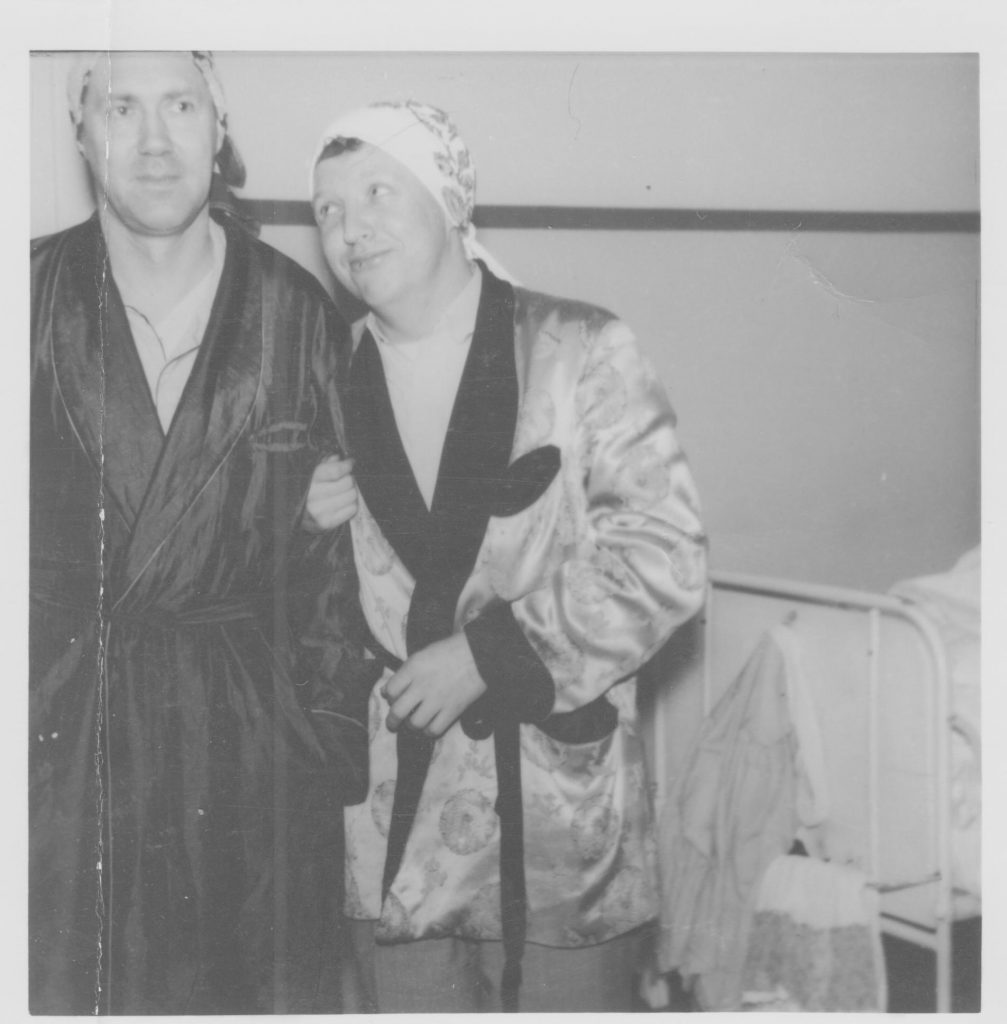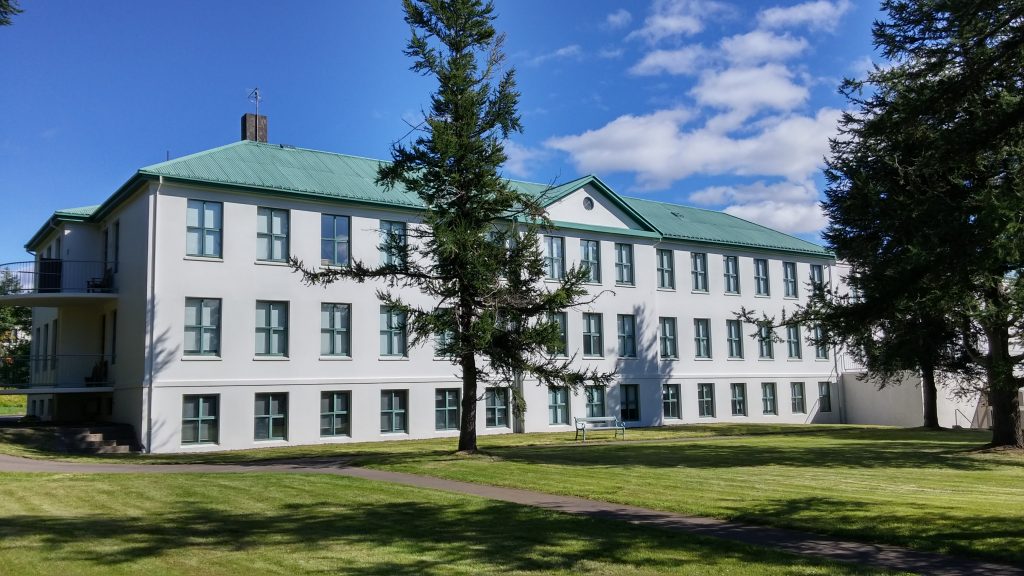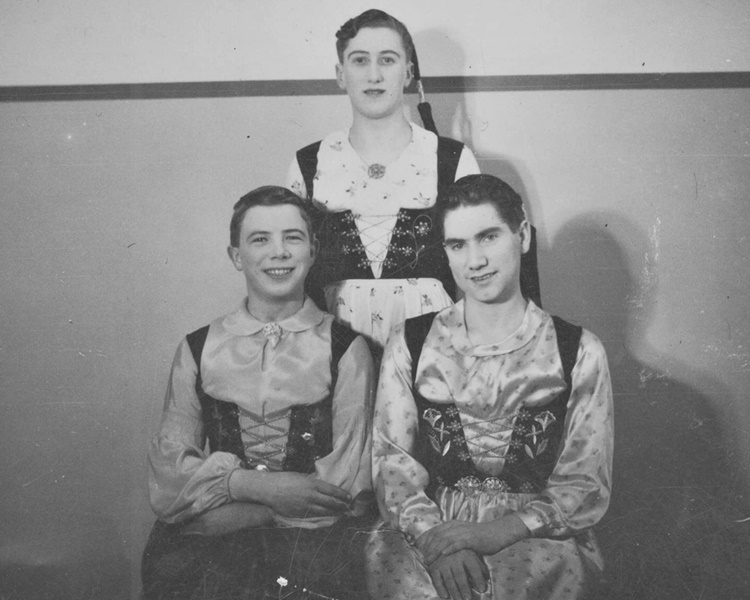We tend to think that drag is a relatively new phenomen in Iceland but photos of patients at the tuberculosis sanatorium at Kristnes from the middle of last century could tell a very different story.
Brynjar Karl Óttarsson has studied the life at the sanatorium for 15 years and he is pretty sure that some of the patients were drag queens.

The photos show a group of guys wearing the Icelandic national costume for women and a group of girls in traditional men’s clothing. It’s not clear on what occasion they were taken, but the historian and teacher Brynjar Karl Óttarsson, who has spent 15 years researching the story of the sanatorium, says that according to the records he has studied the social life at the sanatorium was quite lively, and people liked to dress up in costumes, including drag.
“There were roughly 2.000 people staying at the sanatorium from the year 1927, when it was founded, until it ceased being a sanatorium for tuberculosis patients around 1960.
Simple math tells us that most likely some of the people staying there where gay or transvestite and even though there are no records of that, I think it’s safe to assume that at least some of them were into drag,” he says. “So the history of drag performances in Iceland could be much longer than we have hitherto thought.”
“These photos indicate that part of that culture was dressing up in the clothes of the other sex for shows, or for fun and it looks as if nobody had any trouble with that.”
Brynjar grew up in the village around the sanatorium and has spent most of his grown up years studying its history. He has interviewed a number of former patients there, but he says none of them would confirm that there had been gay love affairs going on there.
“One of the former patients, an old man who is deceased now, told me about this boy who had stayed at the sanatorium that the others used to make fun of for being feminine and for liking to dress like a woman. As the old man put it he was most likely “queer”, but those things were a taboo in the middle of the last century so there is no record of it anywhere.

Nevertheless, the tuberculosis sanatoriums were rumoured to be the setting for many dramatic love affairs and I would be surprised if none of them were between people of the same sex. But we will never know for sure, I guess.”
In photos of men in women’s clothing from this period they are usually uncomfortable and have obviously been forced to play a part, but in the aforementioned photos everyone is smiling and looking quite at ease. Brynjar agrees to that and says that it’s obvious that the people in the photos are having a good time.

“… the tuberculosis sanatoriums were rumoured to be the setting for many dramatic love affairs and I would be surprised if none of them were between people of the same sex.”
“Whether it was a part of some theatrical performance or something else it’s obvious that everyone is enjoying this,” he says. “It has been argued that living in a closed society with surrounded by death people were more uninhabited and set on enjoying life to the fullest and we have records of a very active theatrical culture at the sanatorium at Kristnes.
These photos indicate that part of that culture was dressing up in the clothes of the other sex for shows, or for fun and it looks as if nobody had any trouble with that. So, yes, maybe it was the cradle of drag culture in Iceland, who knows.”
Brynjar is working on a book about the sanatorium at Kristnes, that will be published this autumn and for people curious to know more about the unique culture that thrived there he has created a Facebook page under the heading of Kristneshæli – saga berklasjúklinga. Check it out.

Main photo: Three young and handsome men dressed up in Iceland’s national female costumes.


